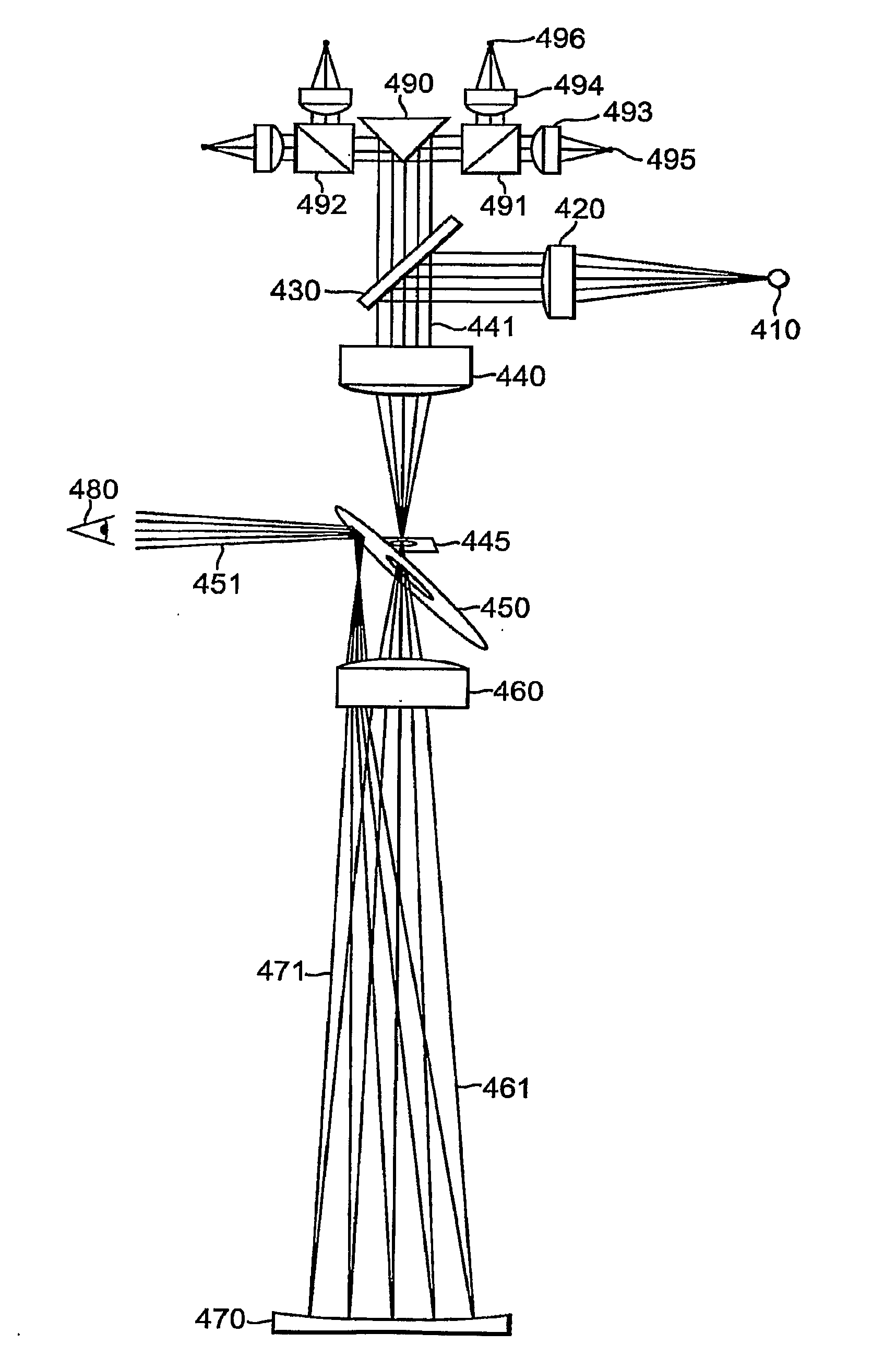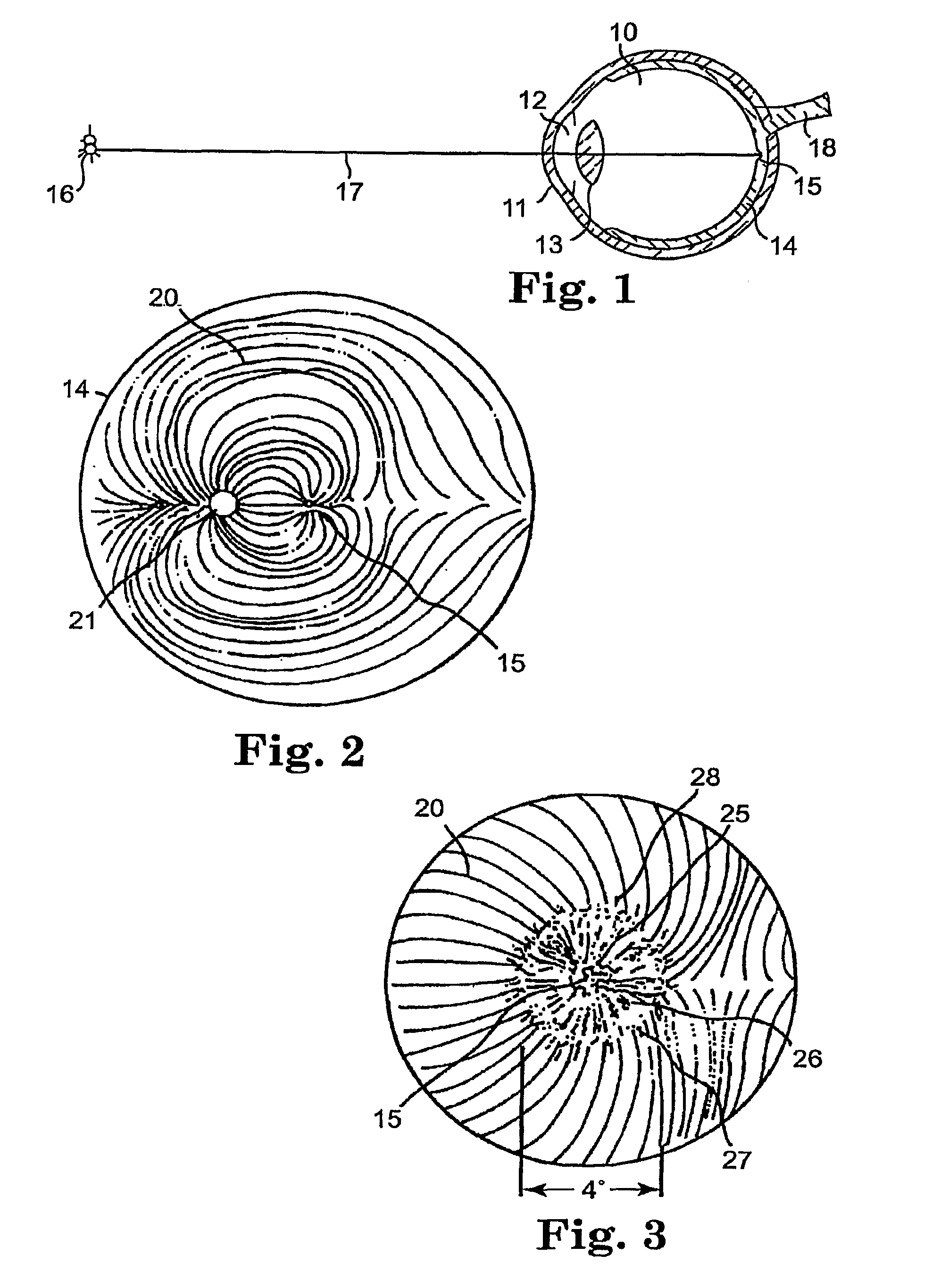Vision screener
a technology of vision screening and vision, applied in the field of medical devices and a vision screening method, can solve the problems of inability of the brain to correctly interpret visual input, difficult detection of risk factors, and inability to solve economic problems
- Summary
- Abstract
- Description
- Claims
- Application Information
AI Technical Summary
Benefits of technology
Problems solved by technology
Method used
Image
Examples
Embodiment Construction
[0020]In general, the present invention is directed to medical devices and more particularly to a pediatric vision screening system that identifies a risk factor for amblyopia by measurement of microstrabismus. What follows is an overview of the optical measurement technique to detect ocular misalignment (strabismus).
[0021]The human eye has birefringent properties that may alter the state of polarization of an incoming optical beam traversing and ultimately retro-reflected from the retina region of the eye. The eye serves best as a retro-reflector when the eye is focused in the same plane, and nearly boresighted to, the incoming optical beam. In this case, an image of the source of light is formed on the central region of the retina, wherein the majority of the reflection in the eye takes place. Reflected light from this image is focused by the optics of the eye, and directed back toward the light source. Under certain conditions the polarization state of the incoming optical beam m...
PUM
 Login to View More
Login to View More Abstract
Description
Claims
Application Information
 Login to View More
Login to View More - R&D
- Intellectual Property
- Life Sciences
- Materials
- Tech Scout
- Unparalleled Data Quality
- Higher Quality Content
- 60% Fewer Hallucinations
Browse by: Latest US Patents, China's latest patents, Technical Efficacy Thesaurus, Application Domain, Technology Topic, Popular Technical Reports.
© 2025 PatSnap. All rights reserved.Legal|Privacy policy|Modern Slavery Act Transparency Statement|Sitemap|About US| Contact US: help@patsnap.com



